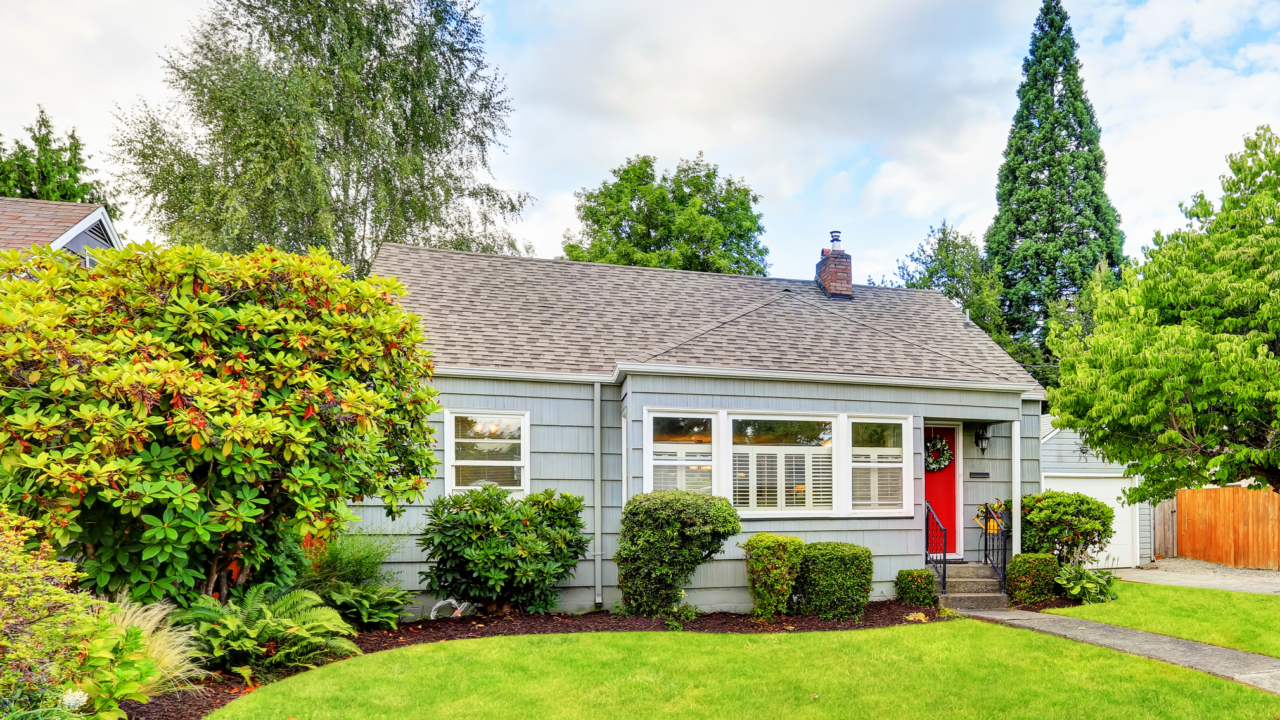VA Home Loans: A Source for Information on VA Loans


Written by Jessica Rapp on May 2, 2024
A VA home loan is a mortgage option backed by the government that is available to eligible veterans, military service members and surviving spouses. Borrowers can use VA loans to buy or build a new home or make improvements to their current residence. Refinance options for existing VA loans and non-VA loans are also available.
The VA loan program was originally created by the U.S. government in 1944 to put homeownership in reach for returning service members. Eligible veterans who may not have had the opportunity to build credit over time or have had the years to save for a down payment can benefit from the financing terms of a VA loan, which are generally more favorable compared to a traditional home loan. More than 746,000 VA loans were issued by approved VA lenders in the 2022 fiscal year. Check out the information on VA loans below to learn more about how they work, the loan programs available, benefits and how to know if you’re eligible.
How does a VA loan work?
VA purchase loans can be used to buy, build or improvement a primary residence. In addition, homeowners can use a VA loan to refinance an existing mortgage to a new interest rate or loan term, or use the refinance to take cash out of their home.
The majority of VA loans are offered by private, VA-approved lenders, not the government itself. The Department of Veterans Affairs (VA) guarantees VA loans, which means they’ll pay a portion of the loan amount back (up to 25%) to the lender if a borrower ever defaults. The guarantee makes VA loans less risky for the banks and mortgage lenders to offer. As a result, VA loan borrowers typically receive better interest rates, lower closing costs and other great benefits compared to conventional loan offerings.
VA loans also don’t have mortgage insurance, regardless of a borrower’s down payment amount. The VA loan program does require non-exempt borrowers to pay a funding fee up front in order to keep the program running. This fee is usually paid at closing or rolled into the mortgage. Veterans with a service-related disability may be exempt from paying this fee or eligible for a reduced fee.
Types of VA loan programs
Whether you’re buying a house with a VA loan or using a VA loan to refinance an existing mortgage, there are numerous VA loan programs available. Almost all VA loans are financed by individual lenders, with the exception of the Native American Direct Loan — which is financed directly by the VA. Regardless of the program you choose, all VA loans are backed by the VA to reduce the risk to lenders if a borrower defaults. Below is a description of each VA loan program. You can also contact a VA lender directly to learn more.
VA-backed purchase loan
A VA-backed purchase loan can be used to buy a home or land to build a home. This loan type is originated by a VA-approved lender, such as a bank or credit union. Even though the VA does not finance the loan, they set their own eligibility requirements that a borrower must meet in addition to the lender’s mortgage requirements. VA purchase loans are primarily used to buy single-family residences, but there are also loan options for purchasing real estate owned (REO) properties and buying manufactured homes. VA purchase loans are also assumable, meaning buyers may be able to take over a VA loan from the seller.
Interest Rate Reduction Refinance Loan (IRRRL)
Also known as a VA Streamline Refinance, an Interest Rate Reduction Refinance Loan (IRRRL for short) is a refinance program that lets homeowners easily refinance their existing VA loan in order to get a lower interest rate or move from an adjustable-rate loan to a fixed-rate loan. IRRRLs are offered through VA-approved lenders.
VA cash-out refinance
In this program, qualified homeowners can access the equity they have in their home by taking out a new VA loan for a higher amount than what is owed. The money from a VA cash-out refinance can be used for home renovations, paying off debt or any other day-to-day expenses. Your current loan can be a VA loan, but it doesn’t have to be.
National American Direct Loan (NADL)
Unlike most VA loans, with a Native American Direct Loan, you’re borrowing the money directly from the government, not a VA-approved lender. Because you’re dealing directly with the VA, rates may be lower. NADLs are only available to veterans who are Native American or have a spouse who is Native American. The loan can be used for buying, building or improving a home on federal trust land. Those who qualify can also refinance an existing NADL to a new NADL with a lower interest rate.
VA Energy Efficient Mortgage (EEM)
A VA Energy Efficient Mortgage can be used in conjunction with one of the other VA loan options above to finance home improvements that increase energy efficiency of a home you are buying or own. Improvements may include installing a solar water heater, insulating a current water heater, adding solar panels, weatherproofing or installing a storm door or windows. Loans are available in three cost tiers, ranging from $0-$3,000, $3,001-$6,000 and more than $6,000. The less money you need to borrow, the easier the qualification criteria. Most VA EEM borrowers fall within one of the first two tiers.
Who is eligible for a VA loan?
VA loans are available to military veterans, active-duty military personnel, Reserve members, National Guard members and eligible surviving spouses. You can check your status and eligibility by requesting a Certificate of Eligibility (COE) directly from the VA.
When working with a VA lender, they may ask you to provide a copy of your DD214 form to verify your military service records from the Defense Department. After verifying your military service, the lender will then usually request a copy of your COE from the VA for you. You can find qualified VA lenders directly on Zillow or ask for a referral from your real estate agent, friends or family.
VA loan eligibility requirements
In order to qualify for VA home loan, you’ll need to meet the VA’s eligibility requirements as well as your lender’s specific loan requirements. Here is a list of the common criteria you may be required to meet in order to be eligible for a VA loan.
Prove military service eligibility
Before you can even be considered for a VA loan, you’ll need to prove you are an eligible military service member, veteran or surviving spouse. Minimum service requirements vary based on when you or your spouse served and for which branch of the military. A Certificate of Eligibility (COE) can be used to check your military status and VA loan eligibility. In some instances, your lender will ask you to provide a copy of your DD214 form to verify your military service records and then request a copy of your COE from the VA for you.
Meet minimum credit score requirements
To qualify for a VA loan, you’ll need a credit score of at least 620. Some VA lenders may accept a lower credit score under certain circumstances, including if you have a large down payment.
Demonstrate a healthy debt-to-income ratio
When considering a borrower for a VA loan, lenders will look at the amount of money that goes toward paying debts each month as well as the amount of money remaining after the monthly debts are paid. For VA loans, a debt-to-income ratio (DTI) of no more than 70% is typically required— this demonstrates to a lender that you have money left in your monthly budget after paying outstanding debts.
The remaining money is what lender’s refer to as your residual income and this comes into play when determining how much you may qualify to borrow. You can calculate your own DTI ahead of time to give you an idea of how much money you’d have remaining after paying your monthly debts and a mortgage payment.
Show two years of consistent income
Your lender will want to see that you have steady income for paying closing costs and making your mortgage payments each month. You’ll be asked to provide copies of your pay stubs from the last six months as well as the last two years of W2s. Any gaps in employment will need to be explained. If self-employed, you may also need to provide copies of your tax returns and any 1099s that show where your income came from over the last two years.
Have full or remaining entitlement
Entitlement is the amount the government will pay your lender if you default on your VA loan. Everyone starts with full entitlement, which is 25% of the loan amount. If you already have entitlement in use on another VA loan, your remaining entitlement may be lower. You can find your remaining entitlement listed on your COE. If you have little to no remaining entitlement, your lender may require you to provide a down payment when taking out a new VA loan. Once your previous mortgage is paid off and you no longer own the property attached to it, you can typically restore your entitlement.
Property qualifications
In addition to being eligible for a VA loan, the property you intend to use the loan on must also meet certain VA criteria.
The home must be used as a primary residence
VA loans must be used for primary residences only and are not available for second homes, vacation homes or investment properties. While 1-4 residential units are allowed, the borrower must intend to live in one of the units as a primary residence.
If a condo, the property must be pre-approved by the VA
The VA maintains a list of pre-approved condos that can be purchased with a VA loan. If the condo you wish to purchase isn’t on the list, getting it approved can be a complicated and time-consuming process that may take months or longer. The condo homeowners association (HOA) has to apply to the VA and provide financial and other information regarding the condominium to the VA for review. Because of this, lenders may have a policy to pass on condo purchases in communities that are not already pre-approved.
The home must be appraised
All home appraisals must be ordered and managed directly through the VA. Any appraisals performed by other Appraisal Management Companies are not accepted.
Depending on location, additional inspections or clearances may be required
Homes located in “very heavy” to “moderately heavy” termite infestation zones or those that include an individual well, shared well or private community water supply require additional inspection clearance. Those serviced by a private road also require evidence of a road maintenance agreement or permanent easement before the property can be approved for purchase with a VA loan.
VA loan benefits
VA loans come with several perks that make them an appealing loan option for those who are eligible. Some of the VA loan benefits also make the upfront costs of purchasing a home more affordable and put homeownership within reach for those who may not otherwise meet the minimum financial requirements for a conventional loan.
Zero down payment
Perhaps the most attractive benefit of VA loans is that they’re available with no down payment. This makes it possible for people without large amounts of savings to purchase a home. Nearly all VA-backed home loans are opened without a down payment, which frees up cash to pay for closing costs and moving expenses. It is important to note that borrowers who put more than 5% down enjoy lower funding fees.
No PMI costs
Unlike other loan programs that require upfront and/or ongoing private mortgage insurance (PMI) premiums if you have a down payment of less than 20%, VA loans do not have a PMI requirement. This is because lenders consider VA loans lower risk, since they are backed by the government.
Lower than average interest rates
VA loans are often available with better interest rates than other loan types, making monthly payments more affordable.
Limited closing costs
VA loans usually have lower closing costs compared to other loan types. The VA caps lenders at charging no more than 1% of the loan amount in origination fees, and certain fees may not be itemized, like rate lock-in charges and processing fees.
Up to 4% seller concessions
In less competitive real estate markets, it’s common for buyers to ask for sellers to cover part of their closing costs when negotiating the sale. VA loans allow sellers to cover up to 4% of the loan amount in concessions, which can be helpful if you don’t have enough cash on hand to cover closing costs.
No prepayment penalties
With a VA loan, you won’t be penalized for making extra payments. You can pay a little extra each month or make occasional lump sum principal payments to lower your total interest and pay your home off sooner.
Assumable loan options
All VA loans are assumable, which means that if you are a qualified VA buyer, you may be able to take over a seller’s existing VA loan with little to no change in rate or terms.
VA support
The VA provides help and guidance to borrowers throughout their home ownership journey, whether that’s helping facilitate cooperation with a builder or coming up with solutions during times of temporary financial hardship.
How to apply for a VA home loan
The process for getting a VA loan can be summed up into the following six steps.
- Check that you meet the minimum VA military service requirements.
- Choose a VA-approved lender in your area. It’s smart to shop around and compare multiple lenders to find one that best fits your needs.
- Prove that you are eligible for a VA loan. Lenders will typically ask for a copy of your DD214 form to confirm your military service and then request a Certificate of Eligibility (COE) to check your VA loan eligibility.
- Use the COE to see how much entitlement you have available.
- Gather application documents, including W2s from the last two years and pay stubs and bank statements from the last six months.
- Apply for a VA loan. The lender you choose to work with can help you complete the application process and answer any questions along the way.
Using a VA loan for a refinance
Whether you’re an existing VA loan borrower or looking to become one, the VA offers refinance loan options on both VA and non-VA purchase loans. If you already have a VA loan, you can refinance with an IRRRL to lock in a better rate or terms. No matter your existing loan type, replacing your loan with a VA cash-out refinance lets you change the rate and terms as well as pull some of the equity out of your home in cash at the same time. The money you take out can be used however you want, either to pay down debt, make home improvements or be liquidated to have emergency cash on hand.
Closing costs on a VA home loan
Most of the VA loan closing costs are the same as closing costs on a traditional home loan, with a few exceptions:
- Closing costs must be no more than 5% of the purchase price.
- Borrowers must pay a VA funding fee that ranges from 0.5% to 3.6% of the loan amount, unless exempt.
- Funding fees can be rolled into the loan instead of being paid at closing.
- Loan origination fees cannot exceed more than 1% of the loan amount.
- Lenders cannot itemize non-allowable fees, such as rate lock-in costs or processing fees.
- Sellers cannot pay more than 4% of the loan amount in closing costs.
- No mortgage insurance, like PMI or MIP, is required.
Along with the standard closing costs, additional fees may apply based on the specifics of your loan and the home you’re buying. These fees might include: Mortgage discount points, home inspection costs and HOA fees.
Key takeaways
A DD214 form is often used by a lender to confirm your military service. Once confirmed, a Certificate of Eligibility (COE) can be requested to check your military status, VA loan eligibility and entitlement. VA loans offer a long list of benefits compared to other loan types that make them a great choice for military service members, veterans and surviving spouses. To list just a few of the perks, VA loans provide lower-than-average interest rates, better loan terms and low-to-no down payment costs.
View our frequently asked questions for more information on VA loans, or take the next step and talk to a VA-approved lender.
Tags
Explore VA mortgage lenders
Zillow makes it simple to explore your VA home loan benefits.
Zillow Group Marketplace, Inc. NMLS #1303160
Find a lender now


